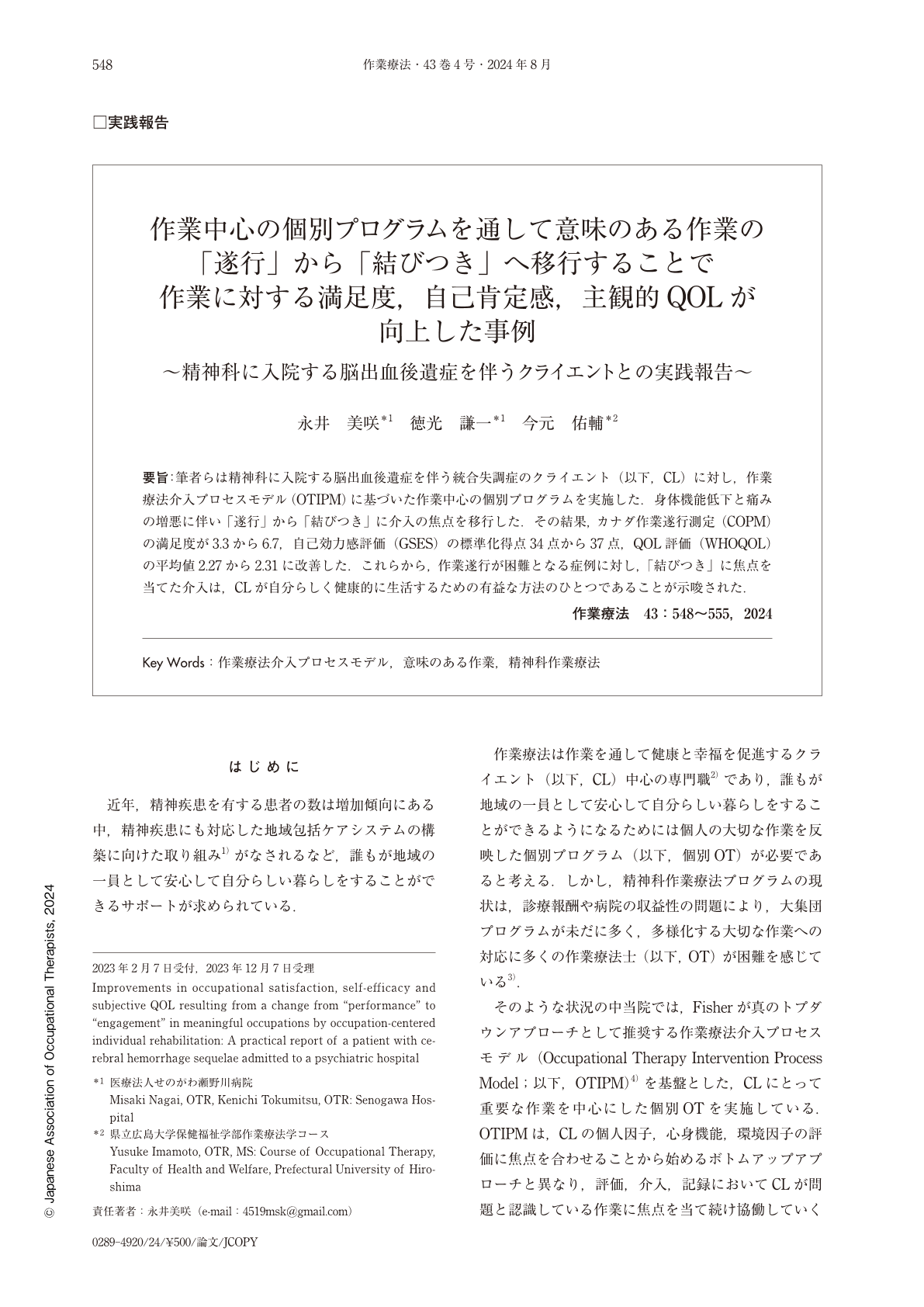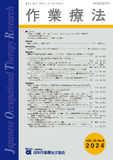Japanese
English
- 販売していません
- Abstract 文献概要
- 1ページ目 Look Inside
- 参考文献 Reference
- サイト内被引用 Cited by
要旨:筆者らは精神科に入院する脳出血後遺症を伴う統合失調症のクライエント(以下,CL)に対し,作業療法介入プロセスモデル(OTIPM)に基づいた作業中心の個別プログラムを実施した.身体機能低下と痛みの増悪に伴い「遂行」から「結びつき」に介入の焦点を移行した.その結果,カナダ作業遂行測定(COPM)の満足度が3.3から6.7,自己効力感評価(GSES)の標準化得点34点から37点,QOL評価(WHOQOL)の平均値2.27から2.31に改善した.これらから,作業遂行が困難となる症例に対し,「結びつき」に焦点を当てた介入は,CLが自分らしく健康的に生活するための有益な方法のひとつであることが示唆された.
Occupation-centered individualized rehabilitation based on the Occupational Therapy Intervention Process Model (OTIPM) was performed for a schizophrenic patient with sequelae of cerebral hemorrhage. As physical function declined and pain worsened, the focus of intervention shifted from “performance” to “engagement.” The intervention resulted in an improvement of satisfaction from 3.3 to 6.7 in the Canadian Occupational Performance Measure(COPM), a self-efficacy deviation from 34 to 37, and a mean subjective increase of the World Health Organization Quality of Life assessment (WHOQOL) from 2.27 to 2.31. This suggests that proving engagement-focused interventions to patients who have difficulty in occupational performance is one effective approach that contributes to a healthy life with a sense of oneself.

Copyright © 2024, Japanese Association of Occupational Therapists. All rights reserved.


